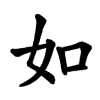Definify.com
Definition 2025
百
百
Translingual
| Stroke order | |||
|---|---|---|---|

| |||
Han character
百 (radical 106 白+1, 6 strokes, cangjie input 一日 (MA), four-corner 10600, composition ⿱一白)
References
- KangXi: page 785, character 4
- Dai Kanwa Jiten: character 22679
- Dae Jaweon: page 1199, character 1
- Hanyu Da Zidian: volume 4, page 2643, character 1
- Unihan data for U+767E
Chinese
|
simp. and trad. |
百 | |
|---|---|---|
| alt. forms |
佰 financial 𦣻 archaic |
|
Glyph origin
| Historical forms of the character 百
| |||
|---|---|---|---|
| Oracle bone script | Bronze inscriptions | Large seal script | Small seal script |
 |
 |
 |
 |
| Characters in the same phonetic series (白) (Zhengzhang, 2003) | |
|---|---|
| Old Chinese | |
| 怕 | *pʰraːɡs, *pʰraːɡ |
| 帕 | *pʰraːɡs, *mbraːd |
| 粕 | *pʰaːɡ, *pʰraːɡ |
| 胉 | *pʰaːɡ |
| 泊 | *baːɡ |
| 箔 | *baːɡ |
| 魄 | *tʰaːɡ, *pʰraːɡ |
| 皕 | *prɯɡ |
| 伯 | *praːɡ |
| 百 | *praːɡ |
| 迫 | *praːɡ |
| 敀 | *praːɡ, *pʰraːɡ |
| 柏 | *praːɡ |
| 湐 | *praːɡ |
| 拍 | *pʰraːɡ |
| 珀 | *pʰraːɡ |
| 皛 | *pʰraːɡ, *ɡeːwʔ |
| 洦 | *mpʰraːɡ, *mbraːɡ |
| 白 | *braːɡ |
| 帛 | *braːɡ |
| 舶 | *braːɡ |
| 鮊 | *braːɡ |
| 陌 | *mbraːɡ |
| 帞 | *mbraːɡ |
| 袹 | *mbraːɡ |
| 蛨 | *mbraːɡ |
| 貊 | *mbraːɡ |
| 佰 | *mbraːɡ |
| 銆 | *mbraːɡ |
| 碧 | *praɡ, *preɡ |
| 咟 | *ɦmreːɡ |
Phono-semantic compound (形聲, OC *praːɡ) : semantic 一 + phonetic 白 (OC *braːɡ).
Etymology
From Proto-Sino-Tibetan *b-r-gja.
Pronunciation
- Mandarin
- Cantonese (Jyutping): baak3
- Hakka (Sixian, PFS): pak
- Min Dong (BUC): báh / báik
- Min Nan
- Wu (Wiktionary): paq (T4)
- Mandarin
- (Standard Chinese, Beijing, vernacular)+
- Pinyin:
- Zhuyin: ㄅㄞˇ
- Wade-Giles: pai3
- Gwoyeu Romatzyh: bae
- IPA (key): /paɪ̯²¹⁴/
-

- (Standard Chinese, Beijing, literary)+
- Pinyin:
- Zhuyin: ㄅㄛˊ
- Wade-Giles: po2
- Gwoyeu Romatzyh: bor
- IPA (key): /pu̯ɔ³⁵/
- (Standard Chinese, Beijing, vernacular)+
- Cantonese
- (Standard Cantonese, Guangzhou)+
- Jyutping: baak3
- Yale: baak
- Cantonese Pinyin: baak8
- IPA (key): /pɑːk̚³/
- (Standard Cantonese, Guangzhou)+
- Hakka
- (Sixian, incl. Miaoli and Meinong)
- Pha̍k-fa-sṳ: pak
- Hakka Romanization System: bag`
- Hagfa Pinyim: bag5
- IPA: /pak̚²/
- (Sixian, incl. Miaoli and Meinong)
- Min Dong
- (Fuzhou)
- Bàng-uâ-cê: báh / báik
- IPA (key): /pɑʔ²⁴/, /paiʔ²⁴/
- Note: báh - vernacular ("hundred"); báik - literary ("numerous").
- (Fuzhou)
- Min Nan
- (Hokkien: Xiamen, Quanzhou, Taipei, Kaohsiung)
- Pe̍h-ōe-jī: pah
- Tâi-lô: pah
- Phofsit Daibuun: paq
- IPA (Xiamen): /paʔ³²/
- IPA (Quanzhou): /paʔ⁵/
- IPA (Taipei): /paʔ³²/
- IPA (Kaohsiung): /paʔ³²/
- (Hokkien: Xiamen, Quanzhou, Taipei, Kaohsiung)
- Pe̍h-ōe-jī: peh
- Tâi-lô: peh
- Phofsit Daibuun: peq
- IPA (Xiamen): /peʔ³²/
- IPA (Quanzhou): /peʔ⁵/
- IPA (Taipei): /peʔ³²/
- IPA (Kaohsiung): /peʔ³²/
- (Hokkien: Zhangzhou)
- Pe̍h-ōe-jī: peeh
- Tâi-lô: peeh
- IPA (Zhangzhou): /pɛʔ³²/
- (Hokkien: Xiamen, Zhangzhou, Taipei, Kaohsiung)
- Pe̍h-ōe-jī: pek
- Tâi-lô: pik
- Phofsit Daibuun: peg
- IPA (Xiamen): /piɪk̚³²/
- IPA (Zhangzhou): /piɪk̚³²/
- IPA (Taipei): /piɪk̚³²/
- IPA (Kaohsiung): /piɪk̚³²/
- (Hokkien: Quanzhou)
- Pe̍h-ōe-jī: piak
- Tâi-lô: piak
- Phofsit Daibuun: piag
- IPA (Quanzhou): /piak̚⁵/
- Note: pah/peeh, peh/peeh - vernacular, pek/piak - literary.
- (Teochew)
- Peng'im: bêh4
- Pe̍h-ōe-jī-like: peh
- IPA (key): /peʔ²/
- (Hokkien: Xiamen, Quanzhou, Taipei, Kaohsiung)
- Wu
- (Shanghainese)
- Wiktionary: paq (T4)
- IPA (key): /pᴀʔ⁵⁵/
- (Shanghainese)
| Rime | |
|---|---|
| Character | 百 |
| Reading # | 1/1 |
| Initial (聲) | 幫 (1) |
| Final (韻) | 陌 (113) |
| Tone (調) | Checked (Ø) |
| Openness (開合) | Open |
| Division (等) | II |
| Fanqie | 博陌切 |
| Reconstructions | |
| Zhengzhang Shangfang |
/pˠæk̚/ |
| Pan Wuyun |
/pᵚak̚/ |
| Shao Rongfen |
/pak̚/ |
| Edwin Pulleyblank |
/paɨjk̚/ |
| Li Rong |
/pɐk̚/ |
| Wang Li |
/pɐk̚/ |
| Bernard Karlgren |
/pɐk̚/ |
| Expected Mandarin Reflex |
bo |
| Baxter-Sagart system 1.1 (2014) | |
|---|---|
| Character | 百 |
| Reading # | 1/1 |
| Modern Beijing (Pinyin) |
bǎi |
| Middle Chinese |
‹ pæk › |
| Old Chinese |
/*pˤrak/ |
| English | hundred |
Notes for Old Chinese notations in the Baxter-Sagart system: * Parentheses "()" indicate uncertain presence; | |
| Zhengzhang system (2003) | |
|---|---|
| Character | 百 |
| Reading # | 1/1 |
| No. | 194 |
| Phonetic component |
白 |
| Rime group |
鐸 |
| Rime subdivision |
0 |
| Corresponding MC rime |
伯 |
| Old Chinese |
/*praːɡ/ |
Definitions
百
- hundred
- numerous; countless
- every; all
- entirely; completely; at all
- A surname. Bai (mainland China, Taiwan), Baak, Bak (Hong Kong)
See also
| Chinese numbers | ||||||||||||||||
|---|---|---|---|---|---|---|---|---|---|---|---|---|---|---|---|---|
| 0 | 1 | 2 | 3 | 4 | 5 | 6 | 7 | 8 | 9 | 10 | 102 | 103 | 104 | 108 | 1012 | |
| Cardinal | 〇 | 一 | 二 | 三 | 四 | 五 | 六 | 七 | 八 | 九 | 十 | 百 | 千 | 萬 万 |
億 亿 |
兆 |
| Financial | 零 | 壹 | 貳 贰 |
參 叁 |
肆 | 伍 | 陸 陆 |
柒 | 捌 | 玖 | 拾 | 佰 | 仟 | 萬 万 |
億 亿 |
兆 |
Compounds
|
|
|
Descendants
Japanese
Kanji
Readings
- Goon: ひゃく (hyaku)
- Kan’on: はく (haku)
- Kun: もも (momo), ほ (ho), お (o)
- Nanori: お (o), ど (do), どう (dō), なり (nari), ひゅく (hyuku), も (mo), もんど (mondo), ゆ (yu)
Etymology 1
| Kanji in this term |
|---|
| 百 |
|
ひゃく Grade: 1 |
| on'yomi |
Borrowing from Middle Chinese 百 (pæk, “hundred”).
Pronunciation
Noun
百 (hiragana ひゃく, romaji hyaku)
Usage notes
This is the most common term for hundred in modern Japanese.
Idioms
Derived terms
|
Etymology 2
| Kanji in this term |
|---|
| 百 |
|
もも Grade: 1 |
| kun'yomi |
/mo1mo1/ → /momo/
From Old Japanese.
Pronunciation
Noun
Usage notes
While ho or o is only used in compounds, momo can be used on its own.[2]
Archaic. Generally only found in set phrases or compounds.
Derived terms
|
Etymology 3
| Kanji in this term |
|---|
| 百 |
|
ほ Grade: 1 |
| kun'yomi |
/po/ → /ɸo/ → /ho/
From Old Japanese.
Pronunciation
Noun
Usage notes
While momo can be used on its own, ho is only used in compounds, where it has lost the initial consonant and appears instead as o (see below). Generally only used in reference to multiple hundreds of things, as in terms 五百 (io, “five hundred; a very many”) or 八百 (yao, “eight hundred; a very many”).[2]
Obsolete. Superseded by o (see below).
Etymology 4
| Kanji in this term |
|---|
| 百 |
|
お Grade: 1 |
| kun'yomi |
/po/ → /ɸo/ → /ho/ → /o/
From Old Japanese. Change in pronunciation from ho (see above).[2]
Pronunciation
Noun
百 (hiragana お, romaji o, historical hiragana ほ)
Usage notes
While momo can be used on its own, o is only used in compounds. This o was originally pronounced ho (see above). Generally only used in reference to multiple hundreds of things, as in terms 五百 (io, “five hundred; a very many”) or 八百 (yao, “eight hundred; a very many”).[2]
Archaic. Generally only found in set phrases and compounds.
Derived terms
References
- 1 2 2006, 大辞林 (Daijirin), Third Edition (in Japanese), Tōkyō: Sanseidō, ISBN 4-385-13905-9
- 1 2 3 4 1988, 国語大辞典(新装版) (Kokugo Dai Jiten, Revised Edition) (in Japanese), Tōkyō: Shogakukan
Korean
Hanja
百 • (baek, maek)
Eumhun:
- Name (hangeul): 일백()
- This term needs a translation to English. Please help out and add a translation, then remove the text
{{rfdef}}.